Short-Wave Crystal Sets
This is a story that started 20 years ago. I recently became involved with the Facebook Crystal Radio DX Group. Folks there are experimenting with short-wve crystal sets, so I've become involved once again.
International broadcasting is a shadow of its former
self, and my hearing is down about 10 dB. I'm using an software-define-radio to find
stations and tune the antenna. The grid-dip oscillator and freq.
counter allow me to positively identify stations by frequency.
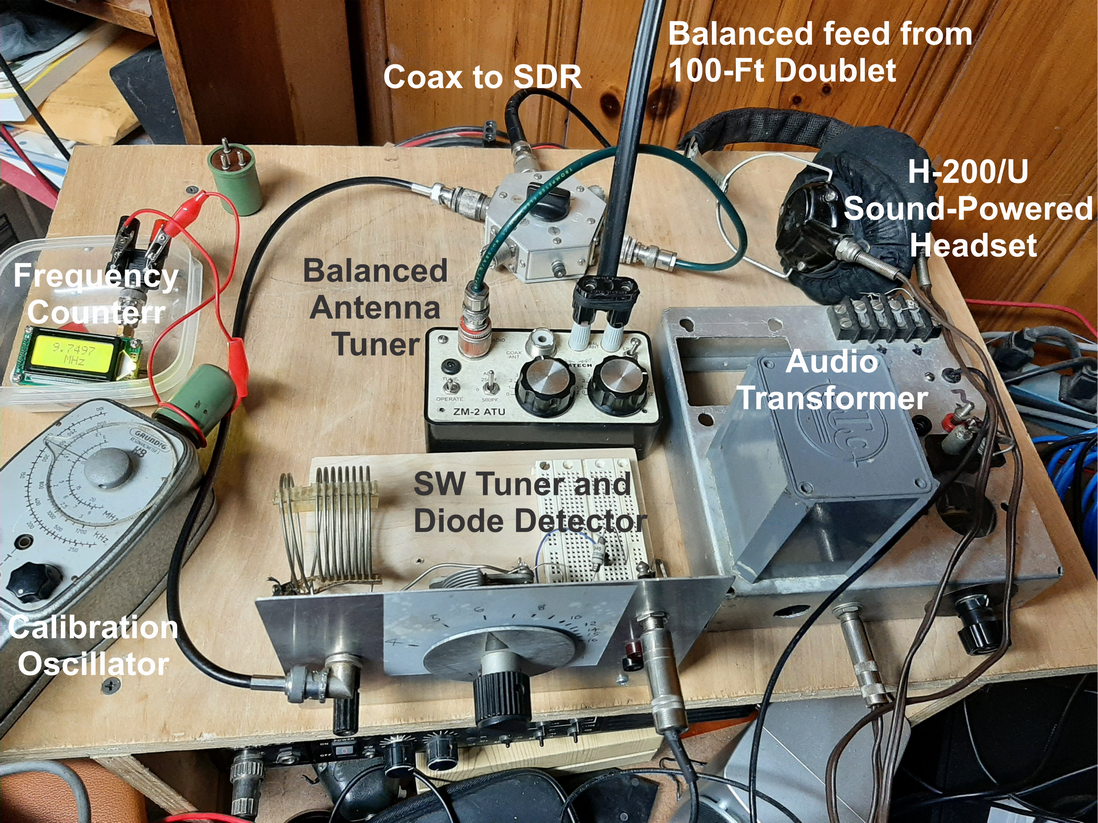
The Facebook group is running one of their listening events later this
fall, and they allow "one stage of audio amplification" for short-wave crystal
sets. Part of me says that that's cheating, but then again I'd
like to hear a few more stations. So, I designed an amplifier.
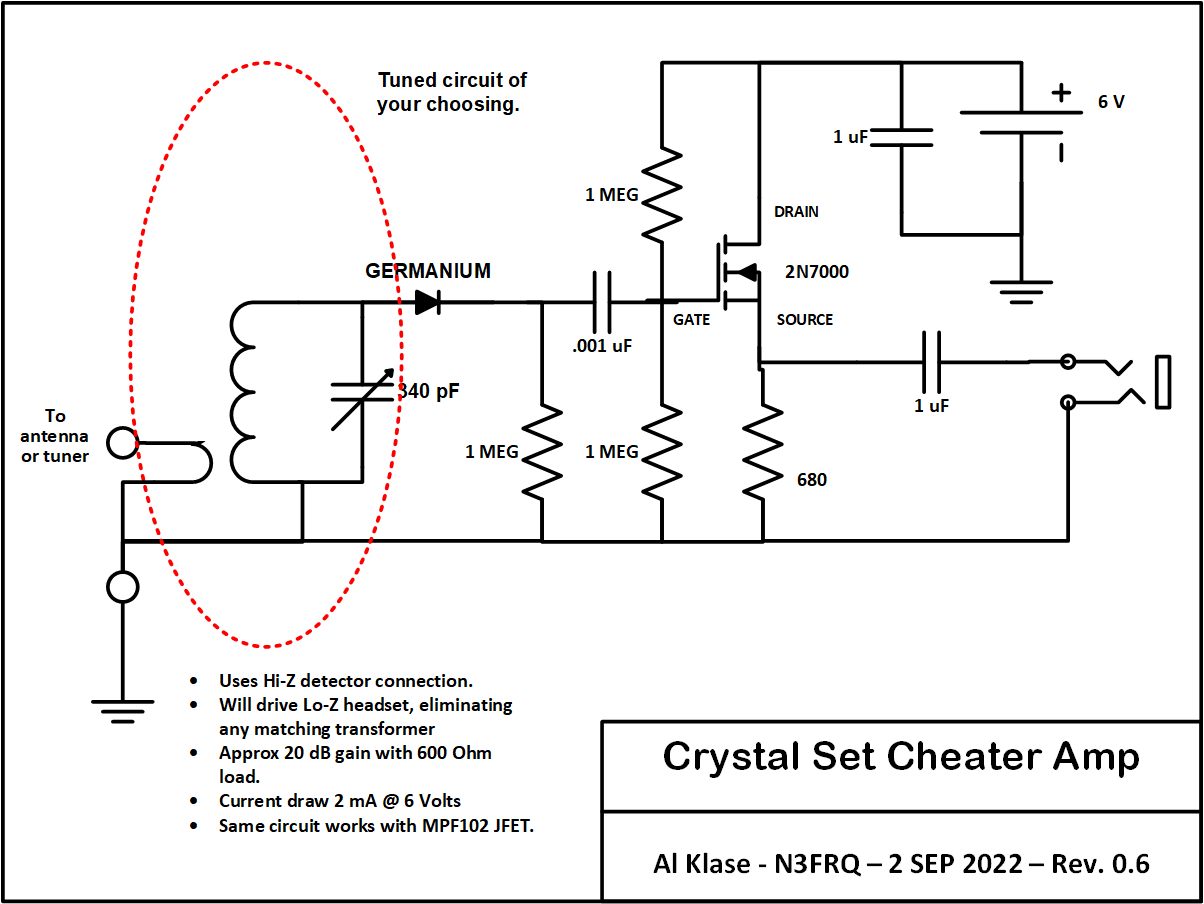
This is a straight-forward "source follower" using a common 2N7000
MOSFET (see Amazon). Component values are not overly
critical, but you want the bias resistors to be a high value, 1
Meg in my case. The source resistor (680 Ohms) establishes the
output impedance and current drawn through the transistor. You
might want to go lower on the source resistor if you're using low-impedance phones. I'm drawing 2.2 mA
from a 6-volt supply. The 2N7000 is good for 200 mA so you have
some leeway. I tried the same circuit with a MPF102 JFET, and it
seemed to work OK.
The source-follower has a voltage gain of a little less than one, so it
delivers a little less than the input voltage to the load.
However because of the large difference in input and output impedances,
there is a LOT of power gain. I'm seeing more than 20 dB.
The high input impedance allows the diode to be connected to the top of
the tank circuit, where its sees maximum signal voltage, without putting too much of a load on the tuned circuit. The low
output impedance makes it easy to use sound-powered phones or ear buds
without the expense of a transformer.
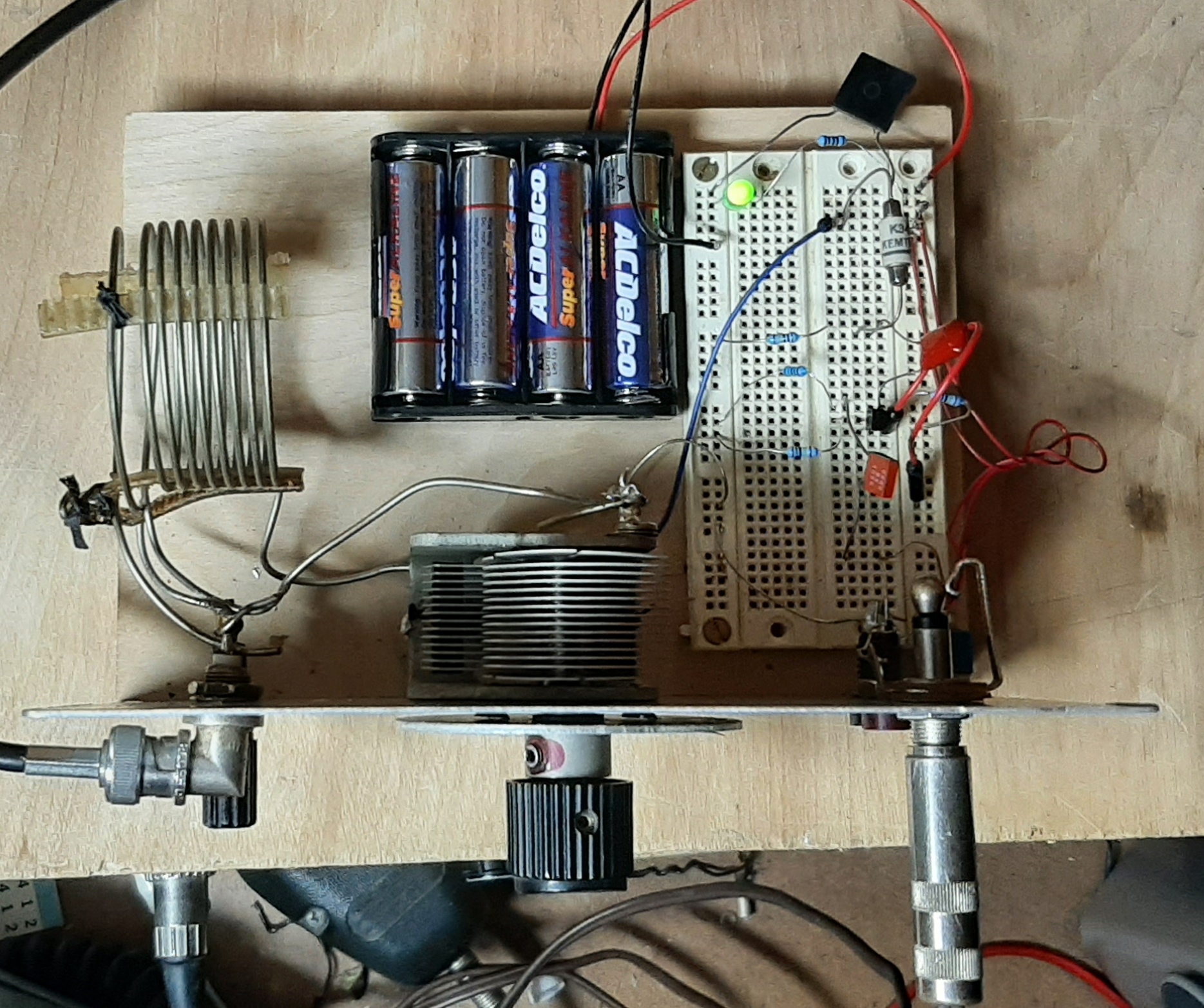
You should alway bread-board experimental stuff. I added a green
LED to remind me to turn it off. A power switch on a crystal
set. WTF!
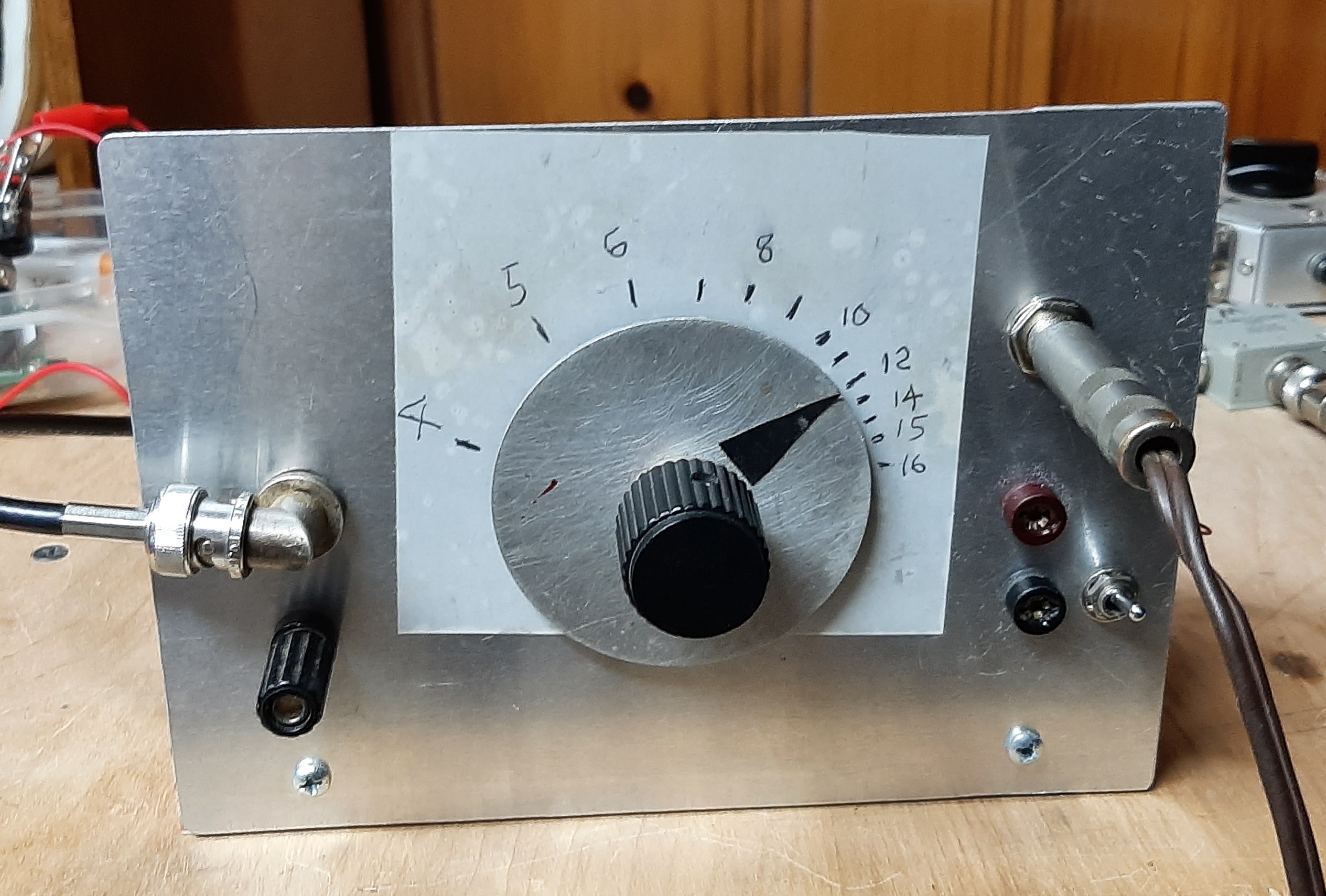
My variable cap has a built in reduction drive, that's nice. With
light coupling like the one-turn primary in this case, it's worthwhile calibrating the dial.
Here's the log from the first evening's listening from Jersey City, NJ
:
| 9/2/2022 |
7:38 PM |
9565 |
R, Marti |
Greenville, NC |
| 9/2/2022 |
11:21 PM |
5890 |
WWCR |
Nashville, TN |
| 9/2/2022 |
11:23 PM |
5935 |
WWCR |
Nashville, TN |
| 9/2/2022 |
11:26 PM |
6030 |
R. Marti |
Greenville, NC |
| 9/2/2022 |
11:30 PM |
4840 |
WWCR |
Nashville, TN |
| 9/2/2022 |
11:35 PM |
5040 |
R. Habana |
Cuba |
| 9/2/2022 |
11:39 PM |
7335 |
R. Marti |
Greenville, NC |
| 9/2/2022 |
11:46 PM |
9790 |
R.C.I. - EE |
Cuba |
I'm using a not-too-expensive SDR and HDSDR software on a PC to "bird dog" for the crystal set and adjust the antenna tuner.
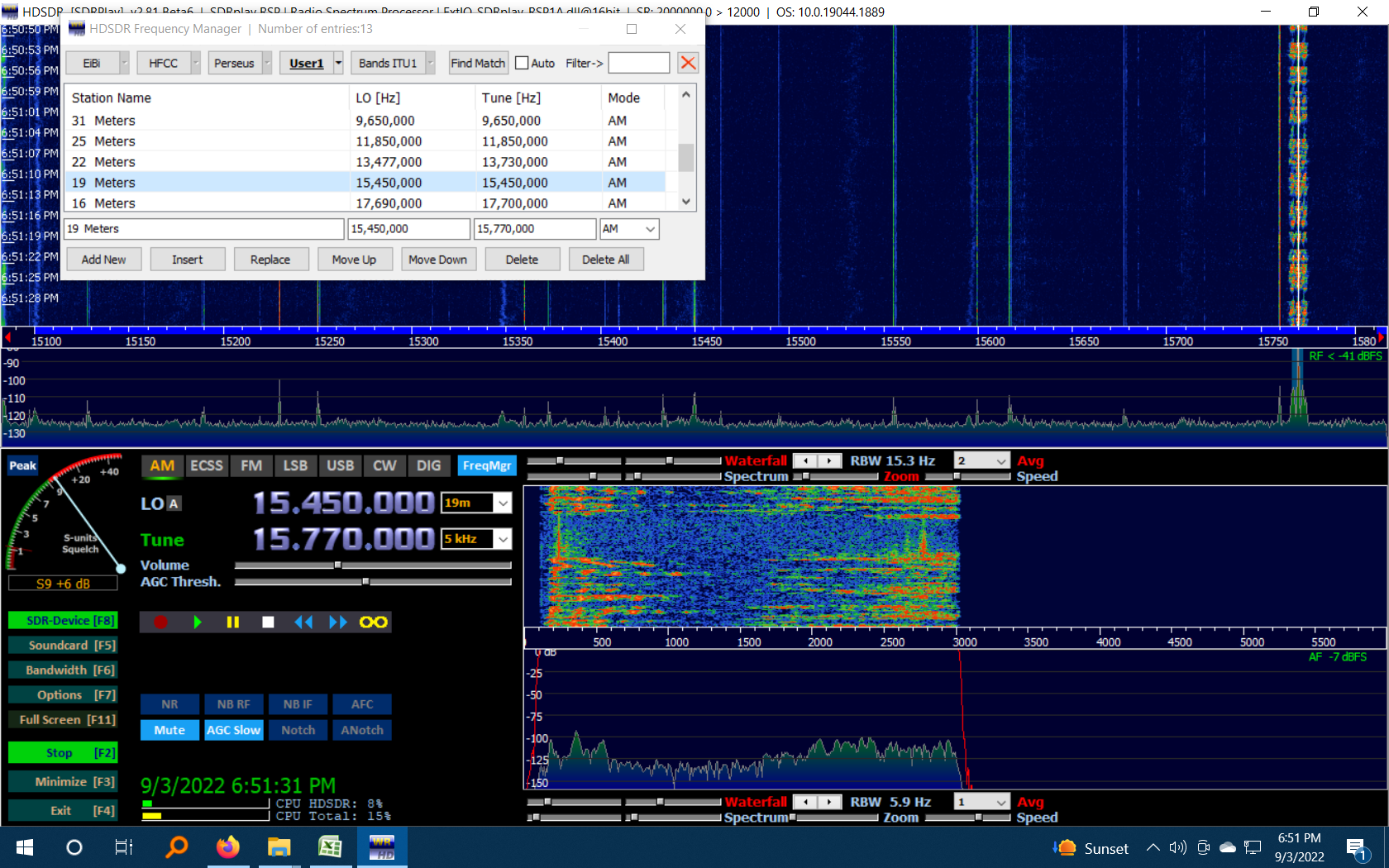
Signals about 5 dB over S9 (S9 = 50 uV, -73 dBm) are easily copied.
Here's a useful short-wave-listening link:
Enter the frequency, and they'll tell you who's on. https://www.short-wave.info/
The SkyWaves Short-wave Crystal-set Prototype (2001)
Here’s some info on my recent short-wave crystal-set
experiments. The basic conclusion is that SW crystal sets are
quite worthwhile, and need not be unduly elaborate to give gratifying
results. This is especially true on the US east coast where the
“prime time” broadcasts are really strong.
A word of warning: You’re likely to hear strong, clear English
broadcasts from the likes of The BBC, The Voice of Viet Nam, and Radio
Taipei. Don’t believe it! These are rebroadcast from nearby
sites in US and Canada. To sort this out, there is a good
frequency list available at: http://www.primetimeshortwave.com/
I the short time I’ve been at it, I have heard Radio Exterior de
Espana , Swiss Radio International, and The Voice of Russia from my
West-central NJ location. So intercontinental DX is entirely
possible. I even heard a “numbers station” on about 13.5MHz.
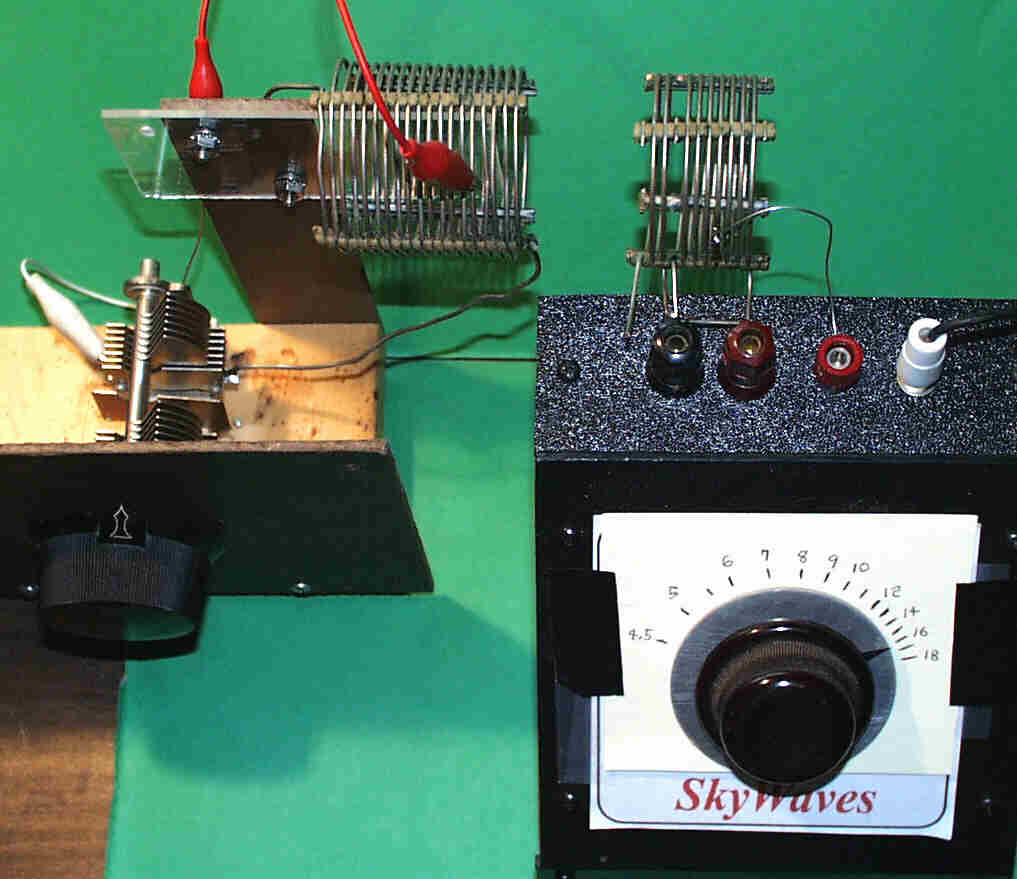
This is a simple double-tuned radio built around Air Dux coil
stock. I used this because it was handy, but solid bare wire of
about 14 gauge on 2” PVC should work just fine. (Strip a length
of #14 Romex.) The primary tuned circuit is Tuggle style and
offers a reasonable compromise between effective, flexible
antenna matching and ease of use. I bent down every other turn on
L1 to make it easy to tap with an alligator clip. I equipped the
secondary coil with a separate “primary” winding so the set can be used
in the single-tuned mode to do a quick band scan. Coupling is
controlled by moving the two sections around on the table. The
“ground” end of the coils face each other.
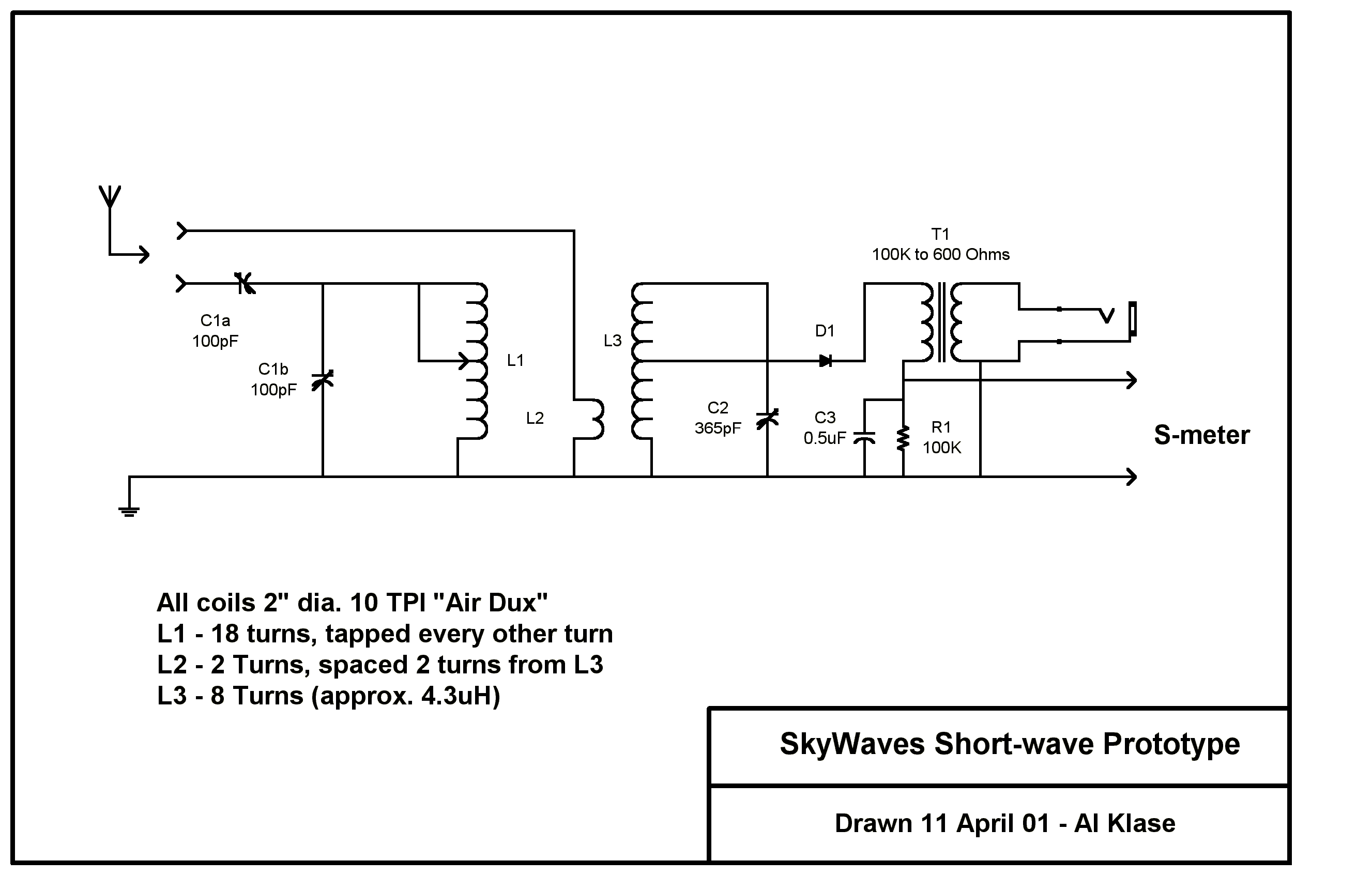
Some additional observations: A secondary coil of about 4 –
4.5 uH will tune 5-18 MHz with a 365pF cap. That’s where 95% of
the action is, so band switching can be avoided. As with most
double tuned sets, a calibrated dial on the lightly-coupled secondary
really helps sort things out on the air. I’m using sound-powered
phones, but signals are strong, so a modest headset will be ok for
starters. Just elininate T1, C3, and R1, and connect the headset
between the diode and ground.






